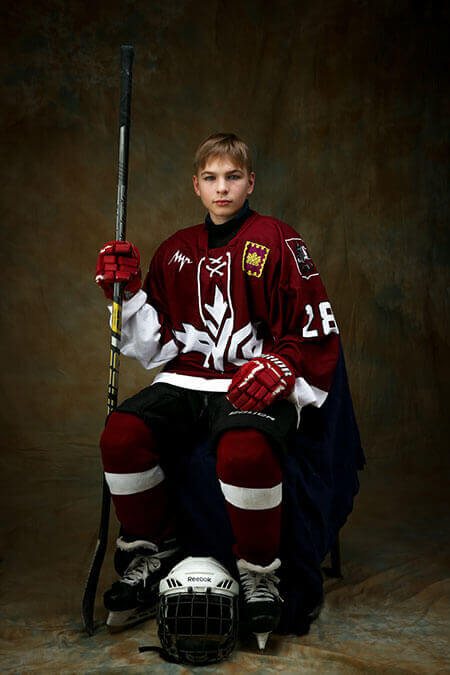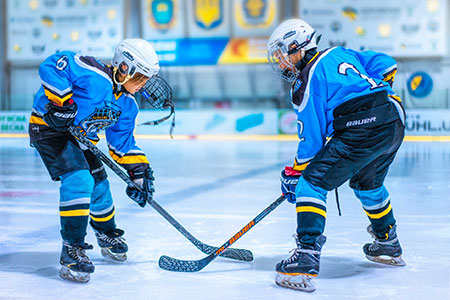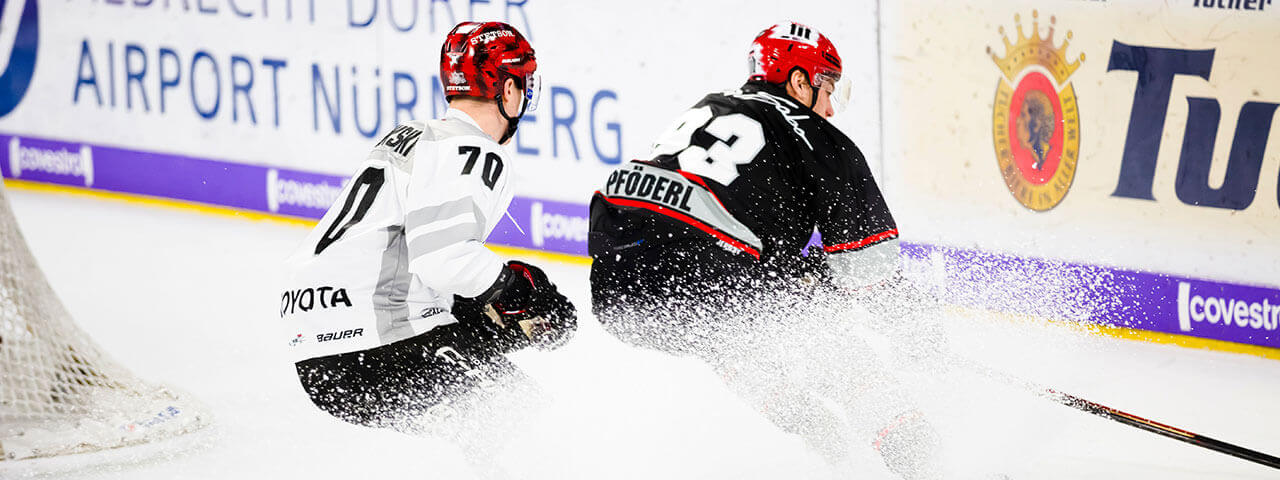“If you are not seeing it, nothing else matters! Your eyes are the basis of your whole game.” The words of Braden Holtby, NHL All-Star goalie, says it all. To play elite hockey, you need visual processing speed and accuracy that’s equally elite. Ambitious hockey players start basic eye training exercises at a young age; however, an individualized vision training program can boost an athlete’s performance from good to excellent.
Sports vision therapists help aspiring and professional hockey players alike to improve and enhance these essential vision skills for better reaction time, stick handling, and pass/shoot accuracy. Based on the individual visual skills and the requirements of the position they play, skaters receive a tailor-made exercise program.
A minor improvement in the visual skills can have a major impact on the performance.
Elite Hockey Performance Requires Elite Visual Skills
Hockey is one of the fastest sports in the world. At the professional level, the puck reaches speeds of 100 miles/h. Players need to visually track this small black disk in motion, while keeping tabs on 11 other players in motion. Keeping visual track of opponents and teammates, anticipating actions, and making or blocking the shot all require sophisticated neuro-visual processing which can be improved through sports vision training.
 Visual Skills for Hockey
Visual Skills for Hockey
- Depth Perception: This visual skill is essential for all positions, and is specifically crucial for a goalie. Excellent depth perception allows accurate judgment of the speed, distance, and direction of the puck, which need to be optimized for the elite performance during this fast-paced game.
Players in other positions need to know their teammates locations in reference to the opponents locations and where they are moving, to make effective passes. In a one-on-one situation, good depth perception helps to determine when to make a move and how to get around the defensive player blocking the goal.
Superb depth perception also allows players in all positions to better judge the movement of the puck in relation to the stationary lines and moving players to prevent off-sides.
- Peripheral Vision: Excellent peripheral vision enables the skater to know where the boards, players, puck, and the goal are at all times, even when they are not directly looking at these things. This also allows them to predict what will happen next and act accordingly.
As an example, the sooner the centreman identifies the opposing defender will attempt an intercept of the puck from a particular side, the earlier he can respond with a pass to his forward on the other side.
Goalies rely on good peripheral vision to defend the goal from multiple opponents approaching the net.
- Visual Reaction Time: A quick response can help a player control a rebound or create a turnover; help a center to win the draw, a goalie to make the save, or determine if you avoid or take a body check at the wrong time. The faster a skater processes visual information, the more effectively he can respond.
- Eye-Hand/Body/Foot Coordination: Hockey players must be able to synchronize their movements on skates while using a stick to control and move the puck. At the same time, they need to keep their vision focused on their target and also scan the surroundings.
Effectively organizing these activities to meet the objectives of the game requires exceptional coordination and balancing skills.
- Visual Acuity: In an active and fast-moving game such as hockey, maximum static, and dynamic visual acuity are essential. Dynamic visual acuity is the ability to accurately see the puck while moving around the defence, shifting the balance from side to side and turning the head to find a teammate for a pass.
- Speed of Focusing: Tracking the puck also requires a rapid change of focus. With the small black disk rapidly coming close, the goalie’s eyes must adapt from far focus to near focus in milliseconds.
The game’s dynamic nature forces players to discern fine details to prevent penalties or other line calls.
- Focusing: Most hockey rinks are over 200 ft long and 85 ft across, whilst the puck is only 3 inches wide. In order to accurately follow the puck, the skater needs to maintain a very clear vision and be able to change his/her focus over this distance very rapidly.
- Colour Perception: Distinct colour perception is useful in recognizing fellow players without raising the head to look at their jerseys. Good contrast and colour perception can help identify players even when the skater is not looking directly at them. As a result, it takes less time to react and make the shot.
- Eye Dominance: Determining which eye is stronger may help to decide if a player should skate on the right-wing or the left-wing.
- Visual Fixation: Keeping the eyes fixed on a specific moving object is critical, especially for goalies and defensemen, who must focus and lock in on an incoming puck.
 Effective Hockey Vision Training For Your Team
Effective Hockey Vision Training For Your Team
Any skill can and must be trained if you want excellent performance. Juggling and bouncing balls off the wall are not enough to achieve the level of excellence required for becoming a champion. To make the most of every player’s talent, you need to know their particular strengths and weaknesses. Only a sport-specific, goal-oriented vision training program based on the players’ sports vision profiles can optimize their visual skills.
The training may vary according to the position of the skater and his/her sports vision profile. A defenceman may need to enhance peripheral vision, whereas the goaltender may primarily work on depth perception.
The Role of the Sports Vision Therapist
We recommend a sports vision assessment for every competitive athlete, regardless of their level of ability or seniority. A sports vision therapist, such as , will evaluate visual functioning as it pertains to hockey performance.
Based on this assessment, the sports vision optometrist creates an individual sports vision profile and builds a training plan directed towards achieving individual goals.
Generally, the hockey player will attend weekly in-office training sessions followed with daily exercises, which the player can carry out at home or as part of the team training. can also work with the coach and parents to set goals and follow up on the player’s progress.
Make an appointment with Opto-Mization Optometry & Vision Therapy to help improve visual skills and hockey performance.
We train hockey players from Victoria, Nanaimo, Duncan, Vancouver Island, and throughout British Columbia.
Sources:
